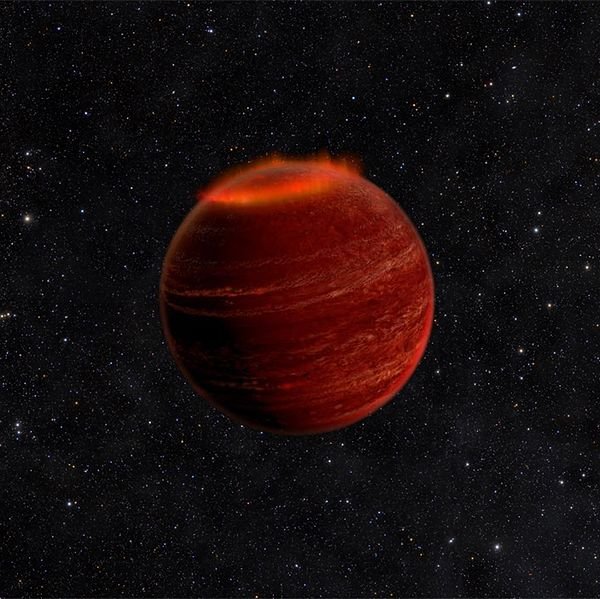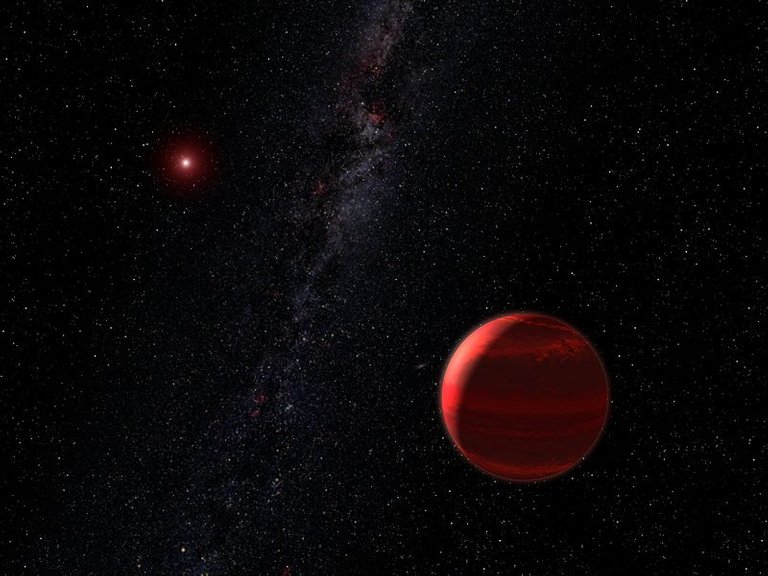Strange “Rogue” Planet Travels Through Space Alone
Some of the basic things we learnt in astronomy are that all planets orbit around a star which usually is bigger and more massive than the planets in a given solar system. Usually, the major reason why planets remain in a solar system while they orbit the star in that solar system is because of the gravitational pull the star exerts on the object in the given solar system. And they usually get that power as a result of their mass and size, as I said in one of my previous posts, the smaller objects orbit the larger objects. With this framework in mind, it can as a shocker to me when I came across a CNN article about a rogue planet, wandering by itself in space without a parent star.
The planet known as SIMP J01365663+0933473 is massive and has a magnetic field 200 times stronger than our Solar System’s biggest planet - Jupiter. This got me wondering, especially since I am preparing to go see the new instalment of the Mission Impossible Movie, a persistent thought keep boggling my mind, why do planets or stars go “Rogue”, is it due to a bad romance in the relationship between the planet and its parent star? Or is it just a freak occurrence. I did a little digging, and I somehow found some answers that I will be sharing in this post, plus I will be talking about this newly found Rogue planet, using it as a false case study. We will first discuss this misplaced planet, then we will proceed to look at the collective scenario of “Rogue” Stars and planets altogether.
SIMP J01365663+0933473
This “Rogue” planet is a beauty, rare images of it reveal a planet that has a crown of auroras sitting on its head. A planet that has a strong magnetic field, and the ability to generate auroras, wandering across the edge of the universe is surely a rarity. located 20 light years away from us here on Earth, with an estimated magnetic field stronger than that of Earth by 16 - 54 times, and how this planet is able to exist in the fashion that it does, is still a mystery that has Astronomers thinking for answers. Melodie Kao, Arizona State University lead study author this to say about this strange planet
This particular object is exciting because studying its magnetic dynamo mechanisms can give us new insights on how the same type of mechanisms can operate in extrasolar planets — planets beyond our solar system
There are several things puzzling about this object, and one of it is the very nature of this stellar body. There are entities that scientist term “Brown Dwarf” also know as “Failed Stars” these objects are typically larger than planets, but they fall short of being qualified to be called stars because they don’t aren’t big enough to fuse hydrogen, just the same way Stars like our Sun does. The baseline that qualifies an object to be called a brown dwarf is still a little blurry, as the subject is still debated, but a consensus has placed it at 13 times Jupiter’s mass. SIMP J01365663+0933473 is a young object, thought to be about 200 million years old, was once thought to be an enormous old brown dwarf, and studies not only reveal its age, but also reveal that it has 12.7 times the mass of planet Jupiter, and this beast of an object is orbiting the universe on its own, without a parent star.
Melodie Kao added
This object is right at the boundary between a planet and a brown dwarf, or 'failed star,' and is giving us some surprises that can potentially help us understand magnetic processes on both stars and planets
We think these mechanisms can work not only in brown dwarfs but also in both gas giant and terrestrial planets.
He also added in a statement.
Like I mentioned earlier, we will be looking at the rogue planet/brown dwarf, and also explore why stars and planets and other objects of magnitude stray away in space between galaxies. These homeless objects are sometimes thrown out of their galaxies that use to be their homes for certain reasons, that are significant and we will look at some of the reasons shortly; as we try to understand the reasons why stars and planets go rogue.
Firstly, we will explore why stars go rogue, before we will look at planets and the reasons they go rogue as well.
Galaxies Collision
This is the major reason why stars go rogue when galaxies collide, it is common that starts with smaller gravitational pull get sprayed out, and eventually they go rogue, which is basically homeless.
Death of Companion Star
Some stars are usually twin in nature, this phenomenon is commonly known as binary stars as they orbit around each other for a long period of time, unfortunately, nothing lasts forever, even stars too have a lifespan, and their lifecycle detects that they die eventually. As stars get older, they enter a couple of phases which sees them grow bigger in size, this which eventually leads to their deaths in the form of a supernova. And when a supernova occurs, everything burns within the vicinity and a detonation occur, it sends the other surviving star flying at a fast rate. With an approximate speed of 1000 km/sec this speed is enough to eject the surviving star out of the galaxy, hence making it a rogue, homeless star wandering in space.
Being Consumed by a Black Hole
This is similar to the previous scenario when one of the binary stars dies in a supernova explosion. Similarly, in this case, if the duo travel and get close to a supermassive black hole, and of the stars get consumed by the black hole, due to the gravitational effect which can be extreme in nature, this sends the other star fast and far away from the reach of the black hole and out of the galaxy. Hypervelocity stars, as they are commonly known.
Now, how can planets go rogue and leave their host galaxies, and begin to wonder the universe without a parent star?
Rogue planets are known to exist, they are not bound to any star, and are known to orbit their galaxy directly. They are eternal wanderers until they are sucked or pulled in by another massive body, either a Sun or a black hole. They are typically very cold due to the absences of a star in their life. A rogue planet can actually be formed outside of a solar system because the needed material to form a planet isn’t much when compared to the formation of star
References




Congratulations @agbona! You received a personal award!
You can view your badges on your Steem Board and compare to others on the Steem Ranking